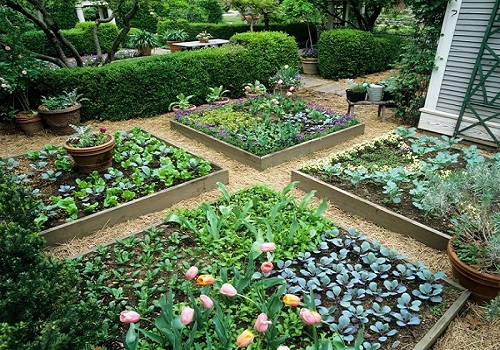Homeowners spend a considerable amount of time and resources designing, building and maintaining their yard.
And with global warming at the front of people’s minds and natural resources rapidly diminishing, people are looking for sustainable ways to minimize their negative environmental impact.
That includes landscaping your yard to reduce your carbon footprint.

Image Source – https://bit.ly/3b3lXY1
To teach homeowners a greener lifestyle, we’ve provided some tips to create an outdoor space that’s sustainable, chemical-free and natural. From incorporating native plants and irrigation systems to protecting soil, here are five ideas to get you started.

Image Source – https://bit.ly/3b02wzf
A Quick Guide to Sustainable Landscaping
Learn how to create an eco-friendly yard.
- Incorporate Native Plants
Local wildlife adapts to plants that grow in that region. When planted in the right spot, they improve wildlife management and water retention as well as enrich soil – which is essential for sustainable landscaping.
Many plants host butterflies and other insects, which provide food for birds. Create a diverse range of plants that support wildlife by offering food and shelter while creating a habitat in which they can thrive. You can work on the plants you already have and gradually replace them if need be. Instead of redoing your entire yard, focus on preserving what you can.
For best results, ask a local expert for their suggestions on native plants to avoid planting aggressive or invasive varieties. These plants can reduce biodiversity and disrupt the ecosystem, which can have a major impact on wildlife.
- Understand the Value of Water
Fresh water is a rapidly depleting resource and it’s time to do what we can to conserve it.
The quickest and easiest way to make the most of watering your lawn is by installing a drip irrigation system. This method delivers water directly to plant roots and prevents water runoff and excessive usage. Make sure to set a timer for maximum effectiveness and install a rain sensor to avoid unnecessary watering in case of rainfall.
Overwatering plants can result in urban flooding, with that water picking up hazardous pollutants and materials on its way to other bodies of water. Mould, yellow leaves and new and old ones falling off plants at the same time are classic signs that they’re receiving more water than they need.
- Reduce/Avoid Chemicals
A significant part of maintaining a natural and green landscape is to avoid unwanted pollution caused by your gardening.
By reducing or altogether avoiding chemical fertilizers, herbicides and pesticides, you ensure the water, air, soil and wildlife are safe.
These chemicals can affect a wider range of wildlife than you think. They infiltrate soil and water as well as runoff dumped into lakes, ponds and rivers; this affects the health of plants and animals within that ecosystem. They evaporate into the air we breathe and are hard to get rid of.
Many pesticides affect the body’s natural hormone production, and long-term exposure can cause growth and gender-specific abnormalities.
- Nurture and Protect Soil
For plants to grow well, soil needs to be healthy.
The key to this is to avoid soil compaction and add compost. Heavy equipment can compact soil, leading to poor drainage and a lack of aeration, which results in declining plant health and, in severe cases, death.
Before planting, mix compost high in sand or clay evenly into the soil. This improves water retention and increases drainage. Recycling your clippings is a great way to provide nitrogen and lower your lawn’s water needs. You can use a mulching mower that drops clippings back on the ground. Composting is also a good option that reduces waste while keeping soil healthy.
Groundcover plants are another way to prevent erosion while supplying organic matter directly to the soil.
- Use Low Voltage Lighting
Lighting is an integral part of outdoor space, helping to bring the setting to life.
But traditional halogen lights can be harmful to the environment since they use a lot of non-renewable energy. It’s better to use LEDs, as they use low voltage and offer a dramatic effect. Alternatively, solar- powered lights look great and don’t use electricity at all since it harnesses the power of the sun.
There are many things you can do to make your yard a haven for wildlife and local plants. Creating a sustainable landscape not only benefits your home but the ecosystem and your community. By following these simple tips, you save money and time in the long run, while protecting the environment.

